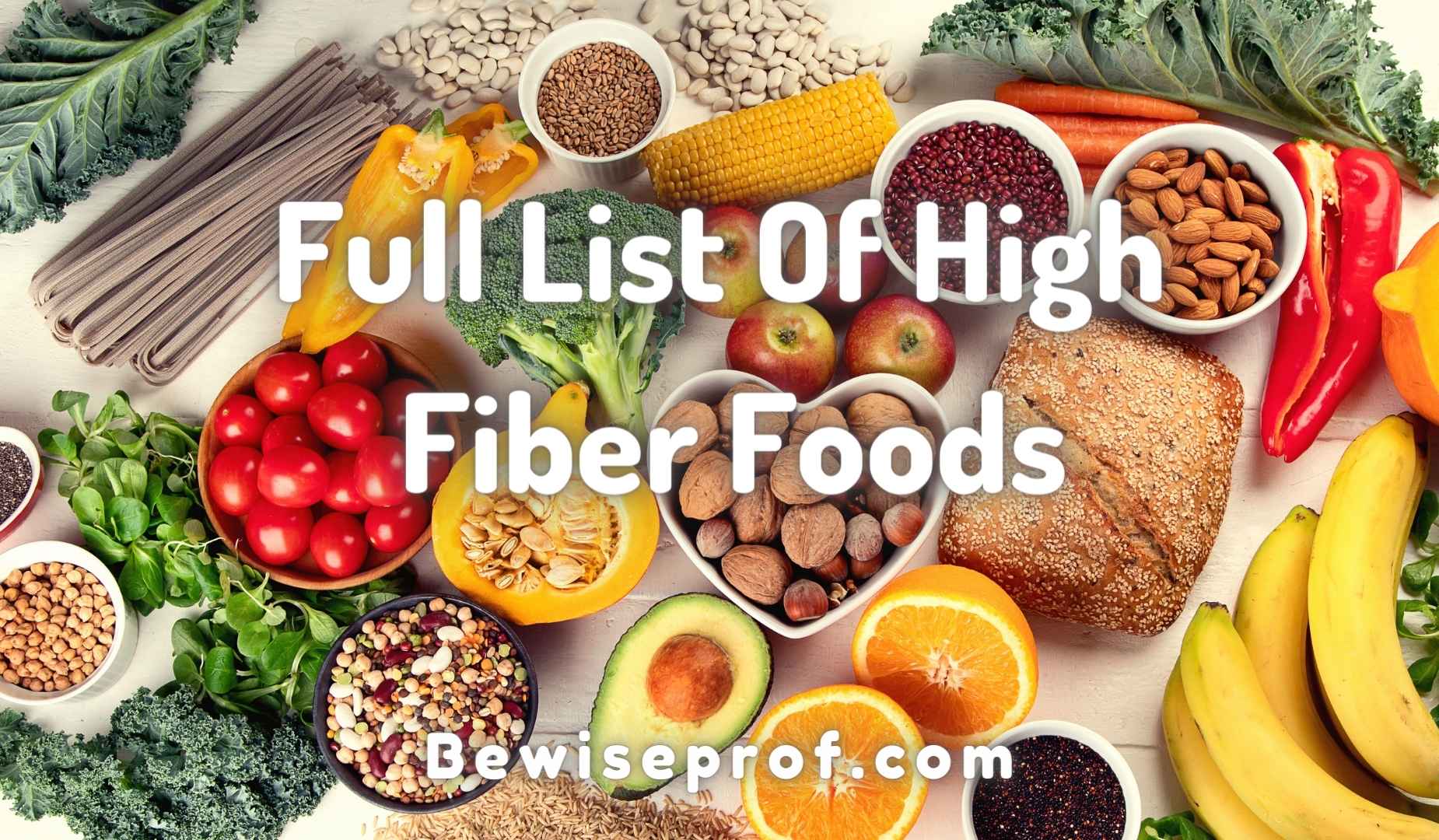Your body’s health is dependent on your diet. Dietary fibers are a key component of healthy functioning. You may wonder why fiber is so important and where to get it. Continue reading to learn more about fiber-rich foods and their role in maintaining your metabolism.
What is Fiber?
Dietary fiber is also known as. Roughage is a type of essential carbohydrate. It includes vegetables, fruits, legumes, and plants. High-fiber foods help maintain good bowel health and keep you fuller for longer periods of time. Your body cannot fully digest it or break it down. Undigested fiber can flush out harmful carcinogens from your body and cholesterol.
Below is the recommended daily fiber intake by The Institute of Medicine
| Age Group | Fiber intake |
| Men under 50 | 38 grams |
| Men above 50 | 30 grams |
| Below 50 for women | 25 grams |
| Women above 50 | 21 grams |
Types of fiber
Two types of fiber offer different health benefits.
Soluble fiber:
This fiber absorbs water and turns into a gel-like substance during digestion. This gel can slow down digestion and make you feel fuller faster. This gel can help you lose weight. Soluble fiber-rich foods include oats and legumes, edible plant skins (peas, beans, fruits), nuts, barley, and other vegetables.
Insoluble Fiber
It won’t dissolve in water. It repels water, and it remains unchanged throughout digestion. Bowel movements are made easier by insoluble fiber-rich foods like whole-wheat flour and nuts, as well as green beans, potatoes, and cauliflower.
India: Fiber-Rich Foods
This is a list of high-fiber Indian foods and their health benefits.
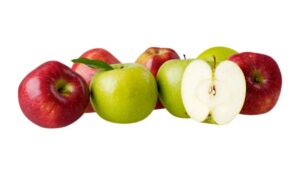
Apples
This fruit is high in soluble fiber. A medium-sized apple contains approximately 4 grams of fiber. It is helpful in the treatment of diabetes and lowers the risk of gallstones. It can also lower cholesterol levels, which can lead to weight loss.
Polyphenols, a micronutrient found in apples, may lower blood pressure and reduce stroke risk. Antioxidants are also present in apples, which can help prevent cataracts. These are great for controlling sudden hunger cravings.

Banana (Peeled)
Insoluble fiber is abundant in bananas. They slow down digestion and help you feel fuller for longer. A study found that bananas and other fiber-rich fruits lower the risk of developing other heart diseases, such as cardiovascular disease and stroke.
When eaten before going to the gym, a banana can give you enough energy to do more exercise and keep you active. Banana is rich in fiber and potassium, which helps build muscles.

Guava
It is high in soluble fiber, which helps eliminate toxins from the colon. Guava helps you lose weight by making your stomach feel full. Guava is rich in antioxidants and vitamin A, which help to prevent the body from absorbing too much body fat.
Medium-sized guava has 8.9 grams of fiber. It contains 12% of the recommended daily fiber intake.

Pears (Nashpati).
Pears are a delicious, fiber-rich fruit from India. However, they also contain Vitamin C and antioxidants that can help strengthen your immune system.
Boron in pear preserves bone health and protects against osteoporosis. Pears’ high glucose content gives you energy and keeps your body active.
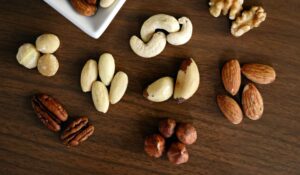
Dried Fruits
High fiber is found in dried fruits like dates, prunes, and figs. They are great for constipation sufferers because they contain a sugar called sorbitol, which aids bowel movements.
Zinc, magnesium, iron, manganese, and iron are also found in dried figs. These nutrients balance hormones and help women with their menstrual issues. They are high in insoluble fiber and can help balance cholesterol.
They can be added to smoothies and oatmeal or eaten with cereal. Avoid overeating them, as they can cause cramping and diarrhea.
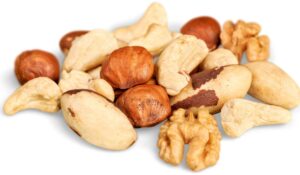
Nuts
Almonds and sunflower seeds are rich in healthy fats and fiber and contain more than three grams per serving. These nuts should not be eaten excessively as they can cause gas, bloating, and other digestive problems.
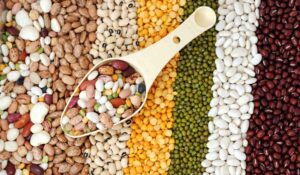
Beans
Lentils (dal), and other beans are high in plant-based protein. These beans can be added to soups, stews, and salads. If you are looking for high-fiber snacks, steamed soybean makes a great snack. You will have longer energy due to the high fiber and carbohydrate content in beans and dals.

Broccoli
About 5 grams of fiber is found in a cup of chopped broccoli. It helps support your gut by increasing the health and balance of healthy gut bacteria. It can also improve your skin texture and appearance. This vegetable is anti-inflammatory and protects blood vessel linings. It also keeps your heart healthy.
This keeps you full and aids in building lean muscle. Broccoli can be baked or sautéed with other vegetables and included in your main meal. Broccoli soup is also great for weight loss.
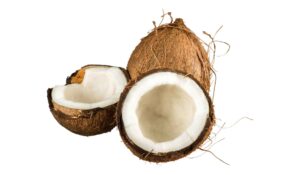
Coconut
Coconut is rich in dietary fiber, including MCFA. Coconut can lower your cholesterol and improve your heart health. Coconut reduces diabetes risk and lowers blood sugar levels due to its low glycemic score.
Coconut increases your metabolism and helps you lose calories and fat more quickly. Coconut can be eaten directly, or you can add grated coconut to your oatmeal or smoothie.
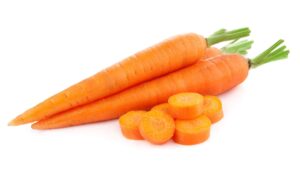
Carrot
Carrots are rich in soluble and insoluble fiber, Vitamin A, Vitamin K, and Potassium. They are good for preventing night blindness and other eye problems.
Carrots are also rich in carotenoids, which lower blood sugar and help control diabetes. Carrots are low in calories and can help you reduce your calorie intake.
Carrot soup can be made, or you can add it to your smoothies, meals, or juices.

Sweet Potato (Shakarkand)
Sweet potatoes are rich in vitamins C and D, which can help you have strong bones and healthy skin. They support healthy heart function and reduce stress. Carotenoids in sweet potatoes can also help prevent aging and improve immunity.
Both types of fibers are present in sweet potatoes, which instantly fill you up and curb your hunger pangs. They can be roasted with spices, or you can make sweet potato fruit chaat by adding grapes and apples to them.
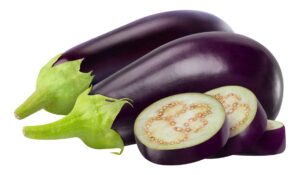
Eggplant
In addition to insoluble and soluble fibers, eggplant also contains phenolic compounds that help promote bone health and prevent osteoporosis. It is also rich in iron, which helps prevent anemia. Its fiber content helps prevent constipation and weight loss.
There are many ways to use eggplant. A famous traditional Indian eggplant recipe is “baigan ka bharta.” Add tomatoes and onion to the mashed eggplant to make it more flavorful.

Onion
Onions are one of India’s most fiber-rich vegetables. They also contain quercetin, an essential compound that helps prevent the growth of cancerous cells.
Your immunity system is stronger and more resilient to infection with onions. They lower blood sugar levels, which can help reduce the risk of developing diabetes. Onion’s antioxidant properties help to burn fat and aid weight loss.
Onions can be added to salads and vegetables.

Papaya
It prevents macular degeneration and other eye problems. It can also lower cholesterol levels. Papaya protects against arthritis and reduces the effects of aging.
Blending papaya into your diet can help add it to your daily intake. It can be mixed with other fruits like bananas.
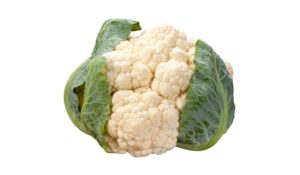
Cauliflower
Cauliflower can provide 10 percent of your daily fiber needs. Cauliflower is rich in choline which can improve your brain health. It kills tumor cells, which reduces your risk of developing cancer.
Cauliflower increases immunity and decreases the appearance of signs of aging, such as wrinkles. It can also be used to lose weight.
Mixing cauliflowers with other vegetables is a part of your daily diet.
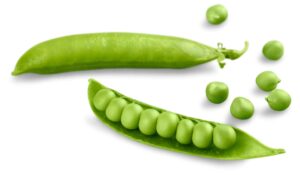
Green Peas
High fiber levels in peas can help with eye problems, arthritis, and Alzheimer’s. Peas also help to make collagen, which gives you healthy skin that is wrinkle-free.
These are high in insoluble fiber and low in calories, so you can eat as many as you like without worrying about your daily caloric intake. This will help you maintain your weight and reduce excess fat.
Green peas can be added to soups and vegetables.
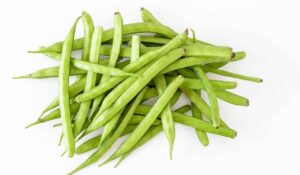
Cluster Beans (Guvar Fali)
Cluster beans are high in soluble fiber. They can be used to treat anemia. They strengthen your bones and teeth. The beans have a low Glycemic Index, which slows down digestion and helps with weight loss.
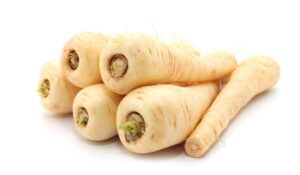
Parsnip (Chukander)
Parsnips are high in soluble fiber, which helps to control blood sugar levels. Parsnip aids in weight loss through the burning of extra fat. It helps to protect your heart and boost immunity.
Parsnips can also be beneficial for eye health and prevent congenital disabilities. Parsnips can be eaten with salads. They are delicious in color, crunch, and taste.
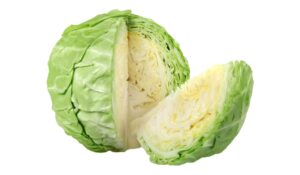
Cabbage
It improves brain health and increases your ability to concentrate by increasing your activity level. It boosts keratin production, which in turn improves hair and skin health. It balances your blood sugar levels. It is a great choice for weight loss because of its high soluble fiber content.
You can add cabbage to soups and salads. It can be added to soups and other vegetables.
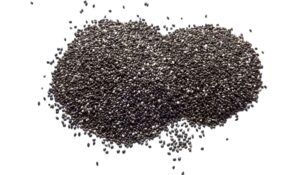
Chia Seeds
Because they are high in soluble fiber, chia seeds can keep you satisfied for longer periods of time. They can reduce food cravings and increase appetite. They increase your metabolism and provide you with high energy to work out harder.
Chia seeds are good for preventing premature aging and inflammation. Chia seeds can be consumed with water or added to smoothies, shakes, and oatmeal.
Summary of Fiber-Rich Foods in India
Fiber is the best solution to improving your digestion and preventing obesity. Fiber promotes gas formation and fermentation and helps to make stool easier. Too much fiber can also cause problems in your digestive system.
A fiber-rich Indian diet should not be exceeded as it can cause bloating, diarrhea and dehydration. In rare cases, intestinal blockage may also occur. The following steps can be taken to prevent side effects from excessive fiber intake:
- Reduce fiber intake
- Increase water intake
- Focus on doing more exercise
- Avoid eating food that causes indigestion or bloating, such as chewing gum.
People now suffer from many diseases, including obesity, because junk food has replaced fibrous snacks. A diet high in fiber can help you avoid obesity.
Fiber-rich diets offer many other benefits, such as preventing constipation, hemorrhoids, diverticulosis, and lowering blood cholesterol. To ensure you get enough fiber, it is important to include high-fiber Indian foods in your diet. You should include fiber in your regular meals and snacks.
Are Bananas High in Fiber?
Bananas are rich in fiber. The resistant starch in green bananas acts as soluble fiber and can help constipation. A medium banana contains 3 grams of fiber. The fiber content of this fruit decreases as it ripens.
Is Rice High in Fiber?
Some rice varieties are higher in fiber than others. Brown rice, however, is especially rich in fiber.
Are Carrots high in fiber?
Carrots are high in fiber. One cup of chopped raw carrots contains almost 4 grams of fiber. These can be added to salads or vegetables. To curb your uninvited food cravings, you can eat carrots.
What Are High Fiber Snacks?
High-fiber snacks include pear, almonds, popcorn, and oat bran.
